Reviews and reports. Рубрика в журнале - Arctic and North
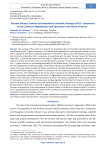
Статья научная
The purpose of this article is to present the conceptual ideas of innovative interdisciplinary Russian-Chinese project “Digital Lomonosov”, the idea of which appeared five years ago and is based on a decade of experience of Chinese studies development in the North of Russia and at the Northern (Arctic) Federal University named after M.V. Lomonosov. In accordance with the goal, the work solves the following main tasks: 1) justifies the relevance of the project “Digital Lomonosov” and its demand in China; 2) provides an overview of scientific works and interdisciplinary research on the humanitarian ideas of Lomonosov — a great scientist, an outstanding personality of the Russian North; 3) summarizes the main results of ten-year development of Chinese studies in the North of Russia and at NArFU; 4) briefly presents the experience of five-year network project of federal universities as the basis for developing the concept of innovative Russian-Chinese project; 5) outlines the prospects for the project and the promotion of Lomonosov Studies in China. The methodology of the review article is based on an interdisciplinary vision of the directions of humanities development in the focus of digitalization and further development of Lomonosov Studies in the interaction of Russian and Chinese scholars. The authors substantiate a new conceptual idea of international transfer of M.V. Lomonosov’s heritage digitally from the North of Russia to China. The results of the analysis are summarization and systematization of the experience of five years of cooperation between federal universities in the field of applied linguistics and education in the context of digitalization, ten years of experience in the development of Chinese studies in the North of Russia and NArFU, actualization of possibilities of international transfer of M.V. Lomonosov humanitarian heritage, and presentation of prospects of Lomonosov Studies in China.
Бесплатно
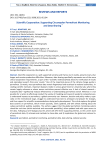
Scientific Cooperation: Supporting Circumpolar Permafrost Monitoring and Data Sharing
Статья научная
Scientific cooperation is a well-supported narrative and theme, but in reality, presents many challenges and counter-productive difficulties. Moreover, data sharing specifically represents one of the more critical cooperation requirements, as part of the “scientific method [which] allows for verification of results and extending research from prior results.” One of the important pieces of the climate change puzzle is permafrost. Currently, most permafrost data remain fragmented and restricted to national authorities, including scientific institutes. Important datasets reside in various government or university labs, where they remain largely unknown or where access restrictions prevent effective use. A lack of shared research—especially data—significantly reduces effectiveness of understanding permafrost overall. Whereas it is not possible for a nation to effectively conduct the variety of modeling and research needed to comprehensively understand impacts to permafrost, a global community can. However, decision and policy makers, especially on the international stage, struggle to understand how best to anticipate and prepare for changes, and thus support for scientific recommendations during policy development. This article explores the global data systems on permafrost, which remain sporadic, rarely updated, and with almost nothing about the subsea permafrost publicly available. The authors suggest that the global permafrost monitoring system should be real time (within technical and reasonable possibility), often updated and with open access to the data. Following a brief background, this article will offer three supporting themes, 1) the current state of permafrost data, 2) rationale and methods to share data, and 3) implications for global and national interests.
Бесплатно

Scientific and educational space of the Arctic: Norway
Статья научная
The analytical overview represents the scientific and educational potential of the Norwegian territories of the Circumpolar Region (Svalbard, Finnmark, Troms and Nordland), Norway's science and innovation policy and scientific interests in the Arctic.
Бесплатно
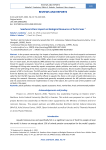
Seashore Litters Impact on Biological Resources of Arctic Seas
Статья научная
In the present manuscript, the impact of seashore plastic litter on the Arctic aquatic environment with a primary focus on fish is discussed. Plastic pollution of seashore and aquatic ecosystem became a major environmental problem in the late 1990s, when it was considered as a major threat for aquatic ecosystem. In recent years, the microplastic (MP) pollution has raised scientific attention and awareness as severe threat for aquatic ecosystem. Since fish is a significant source of food and wealth of Arctic countries, the shrinkage of fishing rates caused by aquatic ecosystems plastic pollution can lead to a significant negative effect on the well-being of the Arctic countries’ population and economy. Recent studies showed significant amount of MP in Arctic seas. The MP particles were found in more than 90% of the studied water samples from the Barents Sea. This indicates that MP has become a major threat for aquatic life in the Arctic. Despite the fact the MP may pose harmful effects to aquatic life, there is still a lack of valid information concerning this research. Moreover, standard and generally accepted protocols for MP pollution monitoring and risk assessment need to be implemented. In view of the above, the current state of the problem is described in this paper.
Бесплатно
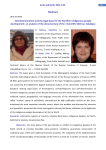
Статья научная
The paper gives a brief description of the bibliographic database of the State Public Scientific-Technological Library of the Siberian Branch of the Russian Academy of Sciences (SPSTL SB RAS), generated for the information support of the topic "Indigenous peoples of the North". It was presented the bibliometric (logical-statistical) analysis of the documents selected from the database relating legal bases of development, self-development and self-determination of northern indigenous peoples of the Russian Federation and the world. The authors examined the temporal, typical, geographical, and language structures of the information flow, revealed socalled "nuclear" group of periodicals, characterized by high publication activity on this issue, mentioned the most important scientific events, where this problem was discussed by scientists and specialists, presented the recent monographs entering the library collection on the legal basis of the indigenous peoples development at the Far North.
Бесплатно
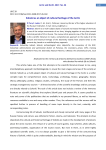
Solovki as an object of cultural heritage of the Arctic
Статья научная
Solovki as a multi-subject object of cultural and natural heritage of the Arctic is one of the unique monuments of our time, bringing together at one place several historical periods of life in Russia. The review article presents one of the first attempts in the scientific literature to make a comprehensive approach to the study of all the cultural and historical heritage of the Solovetsky Islands from ancient times to the present day, based on a multidisciplinary approach.
Бесплатно
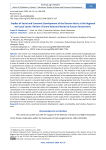
Статья научная
This review is an analytical presentation of the content of scientific articles and monographs published in the last few years and devoted to the problems of socio-economic development of the territories of the Arctic zone of the Russian Federation (AZRF). Since the legal recognition of the AZRF, many empirical studies have been devoted to the issues of its socio-economic development. However, the literature review in them is limited to the selected narrow subject of research. This circumstance creates an urgent need for a comprehensive analysis of currently relevant directions in the study of socio-economic processes in the AZRF. The purpose of this article is to demonstrate the diversity of vectors of scientific search in contemporary Russian studies of social and economic processes in the Arctic. The limitation of the study is the significant growth of publications on the topics of interest to us, caused by the variety of specific issues covered in the latest Arctic research. Therefore, we have selected only a few representative works that reflect the multi-vector nature of Arctic research in contemporary Russia. As a result of analyzing the works, we have found that Arctic research is characterized by both thematic and geographical diversity. The authors conditionally divide contemporary Arctic studies in Russia into three directions: interregional comparative studies within the boundaries of the entire AZRF, regional case studies, and local studies (at the level of municipalities). It is important to note that within the framework of the last two directions of research the key contribution to the multiplication of empirical material and its conceptual understanding is primarily made by scientists from regional scientific and university centers. Another peculiarity of Russian Arctic research is the shift of interest towards the study of the urban environment, industrial centers, and urbanism, while economists and sociologists pay insufficient attention to the study of the rural periphery. The observed deficit of local studies of social and economic processes in the rural Arctic in the future may lead to the rapid development of this direction in contemporary Russian science.
Бесплатно
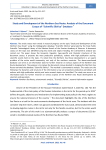
Статья научная
The article traces main trends in research progress on the topic “Study and development of the Northern Sea Route” using the bibliographic database “Scientific Sibirica” generated by the State Public Scientific Technological Library of the Siberian Branch of the Russian Academy of Sciences. A document corpus on the topic was identified using key words and subject heading, the scientometric analysis was carried out. The paper shows the temporal, linguistic, type-specific and thematic structures of the document corpus. It presents the most productive periodicals, authors with high publication activity, scientific events held on the topic. It’s noted that the Northern Sea Route development is an urgent problem of the entire world community, not only of the northern countries. The above-mentioned database can serve as an information basis for further research on various aspects of the Northern Sea Route development. The purpose is to analyze the document corpus devoted to studying the Northern Sea Route retrieved the database “Scientific Sibirica”. The method is scientometric analysis. The results are the following: the dynamics and structure of the information array are presented, productive periodicals and authors with high publication activity and main research topics are identified. The study can serve as an information basis for further research on various aspects of the Northern Sea Route development by scientists and specialists.
Бесплатно

Статья научная
Analysis of the profiles of Russia's leading Arctic Telegram channels is an extremely relevant but underdeveloped research topic. The aim of the study was to identify the unique “handwriting” of the most influential Arctic Telegram channels in Russia. The objectives of the study were: to develop a methodology and criteria for identifying Russia's leading Arctic Telegram channels; to compare them in terms of quantitative and qualitative indicators (effectiveness and authority) of development over the past two years; to determine the characteristic profile of each Telegram channel. The oldest channel in terms of creation (2017), Kapitan Arktika (Capitan Arctic), has a clear authorial, systematically integrated character, the largest share of the audience viewing news on the first day of release, and the highest effectiveness and authority; the three other Telegram channels — SMP (NSR), Arktika Online (Arctic Online) and Pervy Arkticheskiy (The First Arctic) — are primarily informational in nature. SMP (created in 2019) has the largest number of active readers and subscribers, but with minimal engagement, high efficiency indicators, and is expertly assessed by us as informational and rational. Arktika Online (created in 2020) has the highest number of publications in the last two years, but the lowest number of active subscribers, the lowest share of the audience viewing news on the first day of release, and the lowest effectiveness and authority of the four leading Arctic Telegram channels in Russia. We have assessed it as informational and reactive-evaluative. The youngest Telegram channel, Pervy Arkticheskiy (created in 2022), has the highest subscriber engagement and high credibility indicators. We have assessed it as informational and descriptive. The limitations of the author’s approach are related to the lack of consideration of the qualitative structure of each channel’s audience (professional, educational, age, gender, etc.), the lack of study of the ratio of current and “strategic” news in each Telegram channel, and the assessment of the degree of reliability of the news flow of each Telegram channel. It would be advisable to develop these topics in further research.
Бесплатно

The 50th Anniversary of the Start of Drilling the Kola Superdeep Well
Статья научная
The Kola Superdeep Well (SG-3) is an outstanding achievement of Soviet science and technology, drilled in Precambrian crystalline rocks and reached a depth of 12262 m. It was one of a series of super deep wells planned within the framework of the program “Earth's Interior Exploration and Superdeep Drilling”. In order to achieve record depths, unique domestic drilling equipment and materials capable of working at high temperatures and pressures were created. A fundamentally new technology for drilling wells using hydraulic downhole motors was developed. Despite difficult drilling conditions and repeated accidents, SG-3 has fulfilled almost all the tasks assigned to it. The well was penetrated with full core sampling, which was subjected to comprehensive study. This made it possible to study the deep structure of the Earth's crust and to revise the interpretation of depth seismic data. It was found that changes in the physical properties of rocks at great depths had been erroneously interpreted as a change in their composition. It made it possible to assess the prospects of deep horizons of the Pechenga structure for copper-nickel mineralisation by uncovering a previously unknown body of ore-bearing hyperbasites. New information was obtained on the temperature gradient, which turned out to be significantly higher than expected, as well as on the vertical metamorphic zoning along the borehole section. The composition and physical properties of rocks in deep horizons were investigated. Tectonic fault zones and six types of ore mineralisation were identified in the borehole section. New data on ore formation processes at great depths have been obtained, which is an important contribution to the theory of mineral deposit formation.
Бесплатно

The Arctic Convoys and the Kara Expeditions (news from the British Center)
Статья научная
In her article the author comments on two important events connected with the exploration of the Arctic and the significant role it played during the WW2. Valentina Golysheva gives a retrospective view of “Dervish-75”, International Forum in NArFU and the “Kara Expedition” conference in Salekhard held in autumn of 2016.
Бесплатно
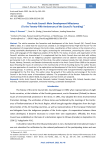
Статья научная
The article examines the formation and development of the Arctic Council (AC; Council) from 1996 to 2021. It is noted that the Council was created as an intergovernmental "high-level forum" for the development of cooperation between the Arctic states, coordination of their actions in the interests of ensuring sustainable development of the region, protecting the environment, preserving the culture, traditions, and languages of the indigenous peoples of the North. The status, structure, and organisation of the Council's activities are characterised. It is emphasised that the Arctic Council does not deal with military security issues. There are six indigenous peoples' organisations and 13 observer states that participate permanently in AC. In the second part of the article, the author analyses Canada, the USA, Finland, Iceland, Russia, Norway, Denmark, and Sweden chairmanship results in the Arctic Council (from 1996 to the present day). Revealing the issues of continuity in the chairmanship of the AC founding states, the author focuses on new approaches of countries in the exploration and development of the Arctic through the activities of working groups. In contrast, joining the AC of intergovernmental and non-governmental organisations is investigated for the first time. The author notes the growth of the authority and prestige of the Arctic Council in the Arctic arena of international relations. The preparation of the Russian Federation for the chairmanship of the AC (2021–2023), its program, and main events are analysed.
Бесплатно
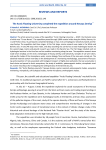
The Arctic Floating University completed the expedition around Novaya Zemlya
Статья научная
The article presents a review of the expedition “Arctic Floating University — 2018”, the thematic name of which was “Terrae Novae”. The expedition passed through 3,800 nautical miles along the White, Barents, Kara and Pechora Seas. Its participants completed landings on two arctic archipelagoes: Solovetsky Islands and Novaya Zemlya. The expedition had three stages. At the first stage, marine research was made in the White and Barents seas. In total, 48 stops were made, and deep sounding was carried out at each hydrological station. At the second stage, marine and ground research was made in the Barents Sea. The third stage included work on hydrological sections in the Kara Sea and ice condition monitoring along the area. The expedition research team made seven landings on the Arctic archipelagos of Novaya Zemlya and Solovetsky. Samples of soil were taken, and specific studies of the atmosphere, water, marine biology, flora and fauna of the area were carried out. The obtained materials contain new data on the development of a monitoring methodology, assessment of forecasting and prevention of risks associated with biological transport of highly toxic pollutants that can accumulate in food chains and spread to Arctic ecosystems; the study of endoliths; paleomagnetic studies; microplastic studies; marine microfauna for investigating the settling history of the Barents Sea, etc.
Бесплатно

The Arctic in the Soviet cinema lens: “Two Oceans” by Vladimir Shneiderov
Статья научная
The study aims at introducing unstudied materials, i.e., film documents of the Soviet period, related to the development of the Russian North, into the scientific circulation. So-called expedition films occupied a special place in the history of Soviet visual anthropology — films of educational content about the peoples and territories of the USSR. They reached its heyday at the turn of the 1920s — 1930s. One of the pioneers of Soviet visual anthropology is considered to be the filmmaker V.A. Shneiderov, the author of a series of films about the USSR territories (“The Great Flight”, “The Pamirs (the bottom of death)”, “At the height of 4500”, etc.). In addition to solving creative issues, the production of such films was part of a state experiment on the construction of local images and the country. The Soviet authorities used the resources of the cinematographer as a media source and agitation. In this article, the author considers the example of the expedition film “Two Oceans”, the classic of documentary films where V.A. Shneiderov pictured the history of the Northern Sea Route and the Soviet colonization of the Arctic. The context of the filmmaking, i.e., parallel processes in Soviet cultural politics and cinema, is discussed as well. The author conclusions contain thoughts about the research value of the Soviet expeditionary film as a complex historical source.
Бесплатно

Статья научная
In the new book "Arctic tourism in Russia" the basic concepts, resource potential, attractiveness (from Lat. Attrahere: to attract), opportunities and threats of environmental, cruise, international, and other types of tourism in the Arctic are system-based analyzed, for the first time in the literature. The sphere of tourism has becoming an integral sector of the economy, having a multiplicative effect for the development of infrastructure, social services, employment. Reference materials about the tourism products in the Russian Arctic and Far North regions are published, including the Arkhangelsk and Murmansk regions; Republic of Karelia, Komi, Sakha (Yakutia); Nenets, the Yamalo-Nenets, Khanty-Mansiysk, the Chukotka Autonomous Districts; Taimyr Dolgan-Nenets Municipal District, Turukhansk district, the city of Norilsk of the Krasnoyarsk region; Magadan region, Kamchatka region.
Бесплатно
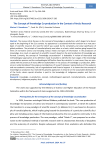
The Concept of Knowledge Co-production in the Context of Arctic Research
Статья научная
The review article focuses on the concept of knowledge co-production, which began to be developed at the beginning of the 21st century. Its appearance is associated with the transition to a new paradigm of scientific research, the need for which was caused by the complexity and social significance of global problems. The principle of transdisciplinarity was taken as a basis, which involves going beyond the limits of normative science and including various media and types of information in the production of knowledge. As a result, an approach to scientific research based on the joint production of knowledge was formed. Currently, the concept of “knowledge co-production” is debatable. A review of theoretical and methodological approaches to its definition made it possible to identify the main stages of the knowledge co-production process and the methodological difficulties faced by scientists. In most cases, they are associated with the presence of many different stakeholders in the process of knowledge co-production, differences in understanding of the purpose and objectives of research between representatives of the academic and non-academic community, lack of organizational and financial support. It is shown that the concept of knowledge co-production has received the greatest application in research on the sustainable development of the Arctic, where special attention is paid to the knowledge of indigenous peoples and their co-production.
Бесплатно
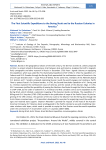
The First Scientific Expeditions to the Bering Strait and to the Russian Colonies in America
Статья научная
Based on the geographical atlases of the 16th century, the German scientist G. Leibniz proposed to Peter I a project aimed at discovering a strait between Asia and America, studying the Earth’s magnetic field, cartographic and other research in Russia. In December 1724, Peter I signed a decree on equipping the expedition, which was called the First Kamchatka Expedition (1725–1730). In 1732, the expedition of I. Fedorov and M.S. Gvozdev through the Bering Strait approached the northwestern coast of America in the area of Cape Gvozdev (now — Cape Prince of Wales). At the same time, members of the Admiralty Board N.F. Golovin and T. Sanders proposed organizing Russian round-the-world voyages and creating a Pacific Fleet to protect Russia's Far Eastern borders. In 1741, the Second Kamchatka Expedition of V.I. Bering and A.I. Chirikov explored the northwestern coast of America and the islands of the Aleutian ridge. In 1763, M.V. Lomonosov justified the possibility of passing the Northern Sea Route through the Pole to Kamchatka. In 1764–1769, by the order of Catherine II, K. Krenitsyn and M.D. Levashov sent a secret expedition to the Bering Strait, which initiated a systematic mapping of the Aleutian Islands and Alaska. The expedition of I. Billings and G.A. Sarychev (1785–1796) resulted in the publication of maps of the Pacific Ocean. By the beginning of the 19th century, the question of the sea route to the Atlantic from the Bering Sea through the Arctic Ocean remained open. I.F. Kruzenshtern developed his own plan for organizing round-the-world voyages and received state support. Emperor Alexander I granted the request of the head of the Russian-American Company, N.P. Rezanov about sending goods to the Pacific colonies by sea and establishing interstate relations with Japan, which made it possible to equip the first Russian round-the-world expedition under the command of I.F. Kruzenshtern and Yu.F. Lisyanskiy (1803–1806).
Бесплатно
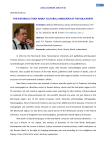
The Historical Study about Cultural Landscapes of the Kola North
Статья научная
The article represents a short review of the new book by prof. P.V. Fedorov «Cultural Landscapes of the Kola North: Structure and Historical Dynamics».
Бесплатно
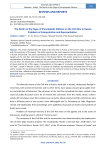
Статья научная
The article characterizes the study of the Civil War in Russia at the present stage in connection with the centenary of this epoch. The author points out the most important research projects implemented in Russia and abroad. The article summarizes the research results and reviews the current state of historiography of the Civil War and intervention in the Russian North. The author presents an overview of the consideration of problems and events of this epoch in Northern Russia in the Russian encyclopedias about the Civil War. The article gives a detailed critical analysis of the key problems of the Civil War in the North of Russia and the life of this region, its population on the pages of 3-volumes encyclopedia “Russia in the Civil War”, issued in Moscow in 2021. In contrast to simplistic representations and distortions of facts, the author reveals the real processes that took place on the northern territories of Russia during the dramatic era of Civil War, reflects on the prospects of further research.
Бесплатно


